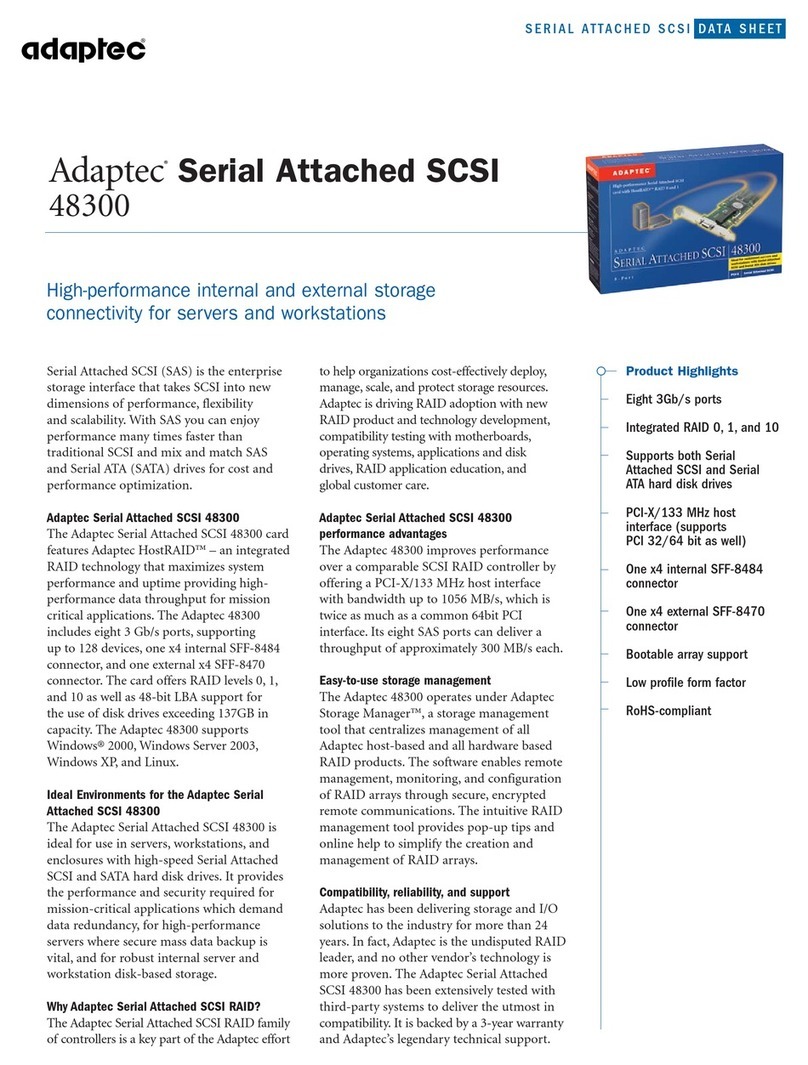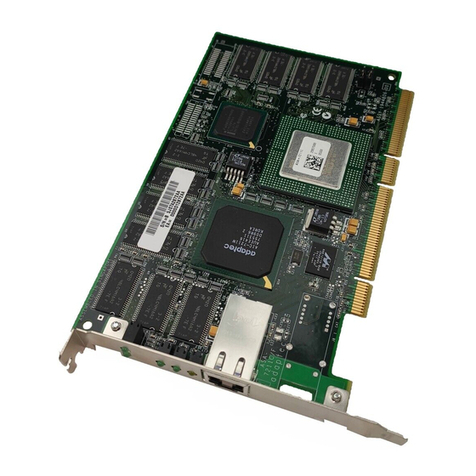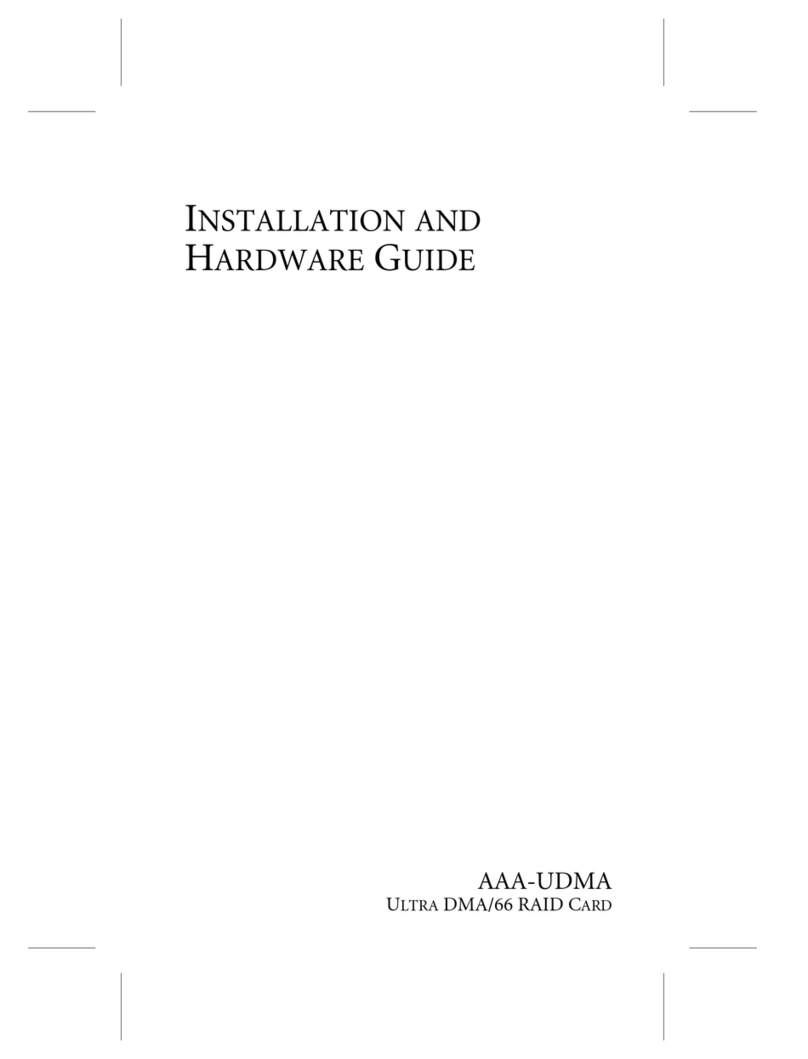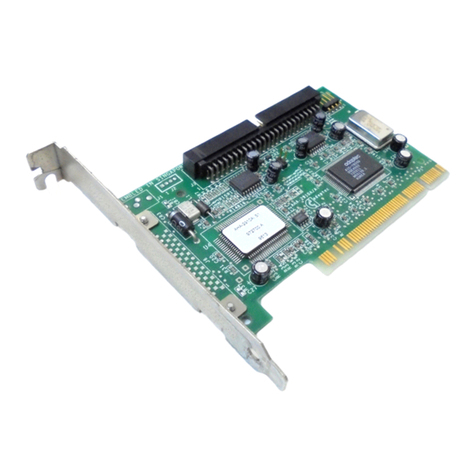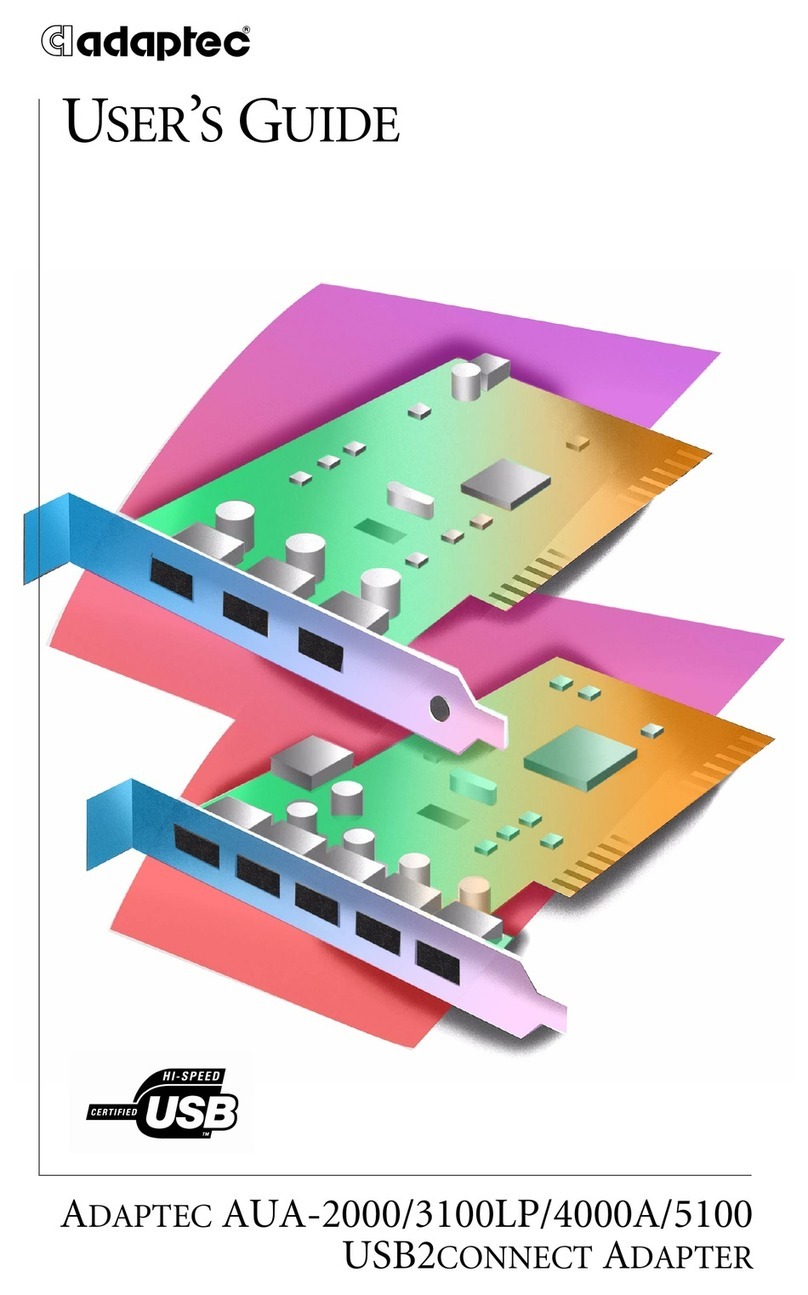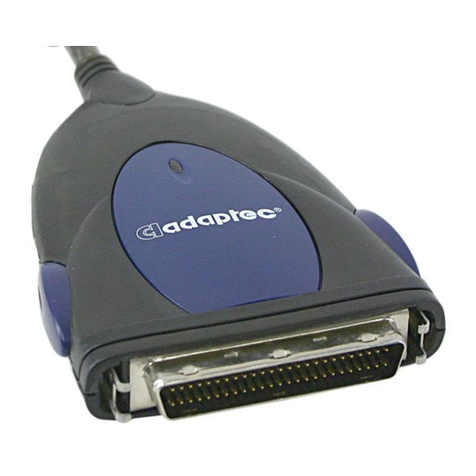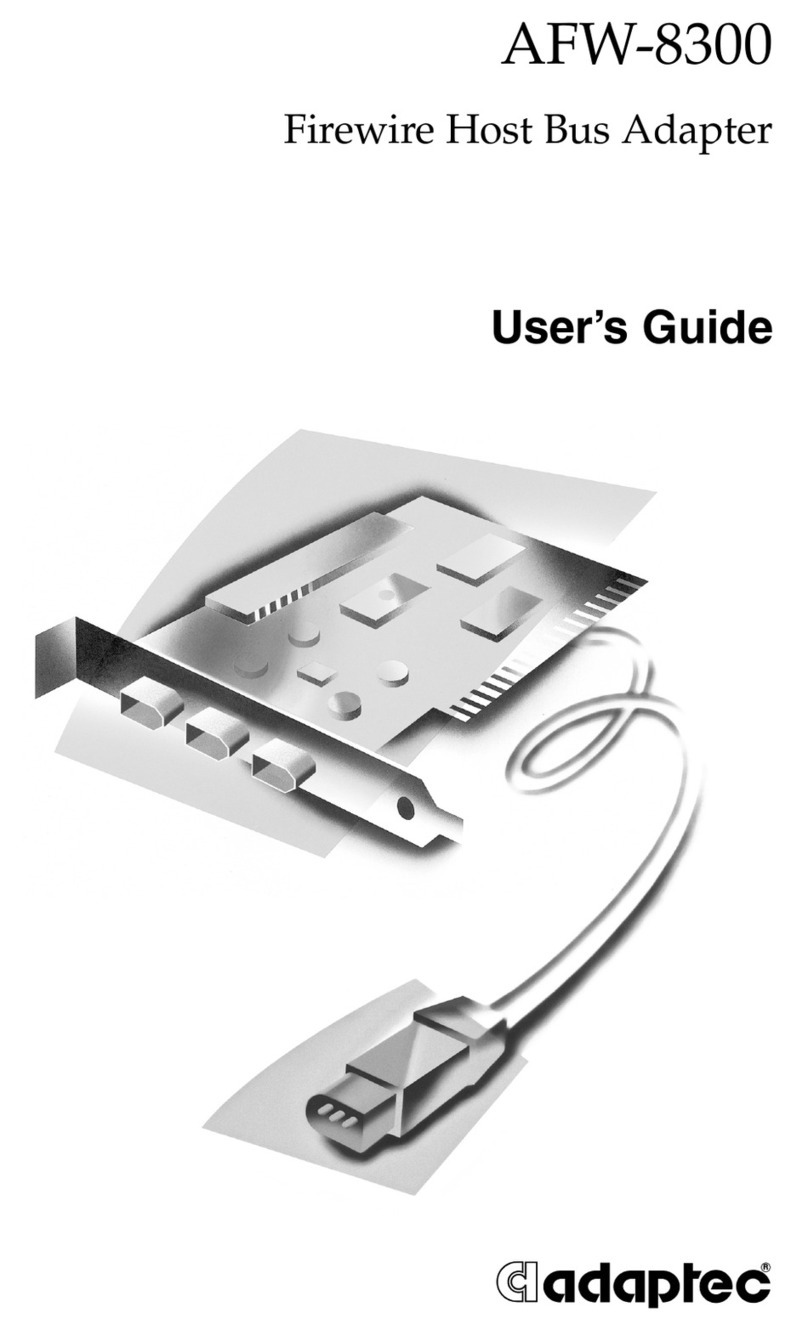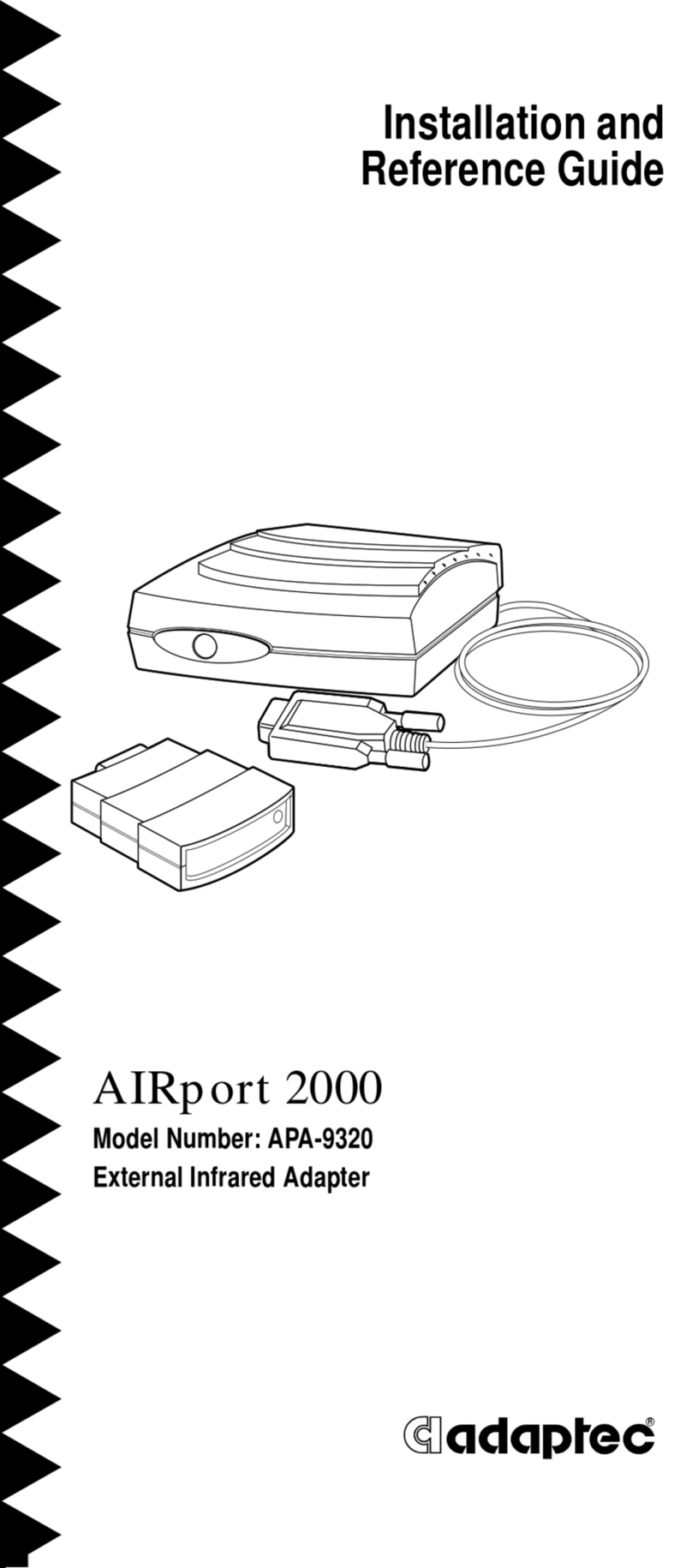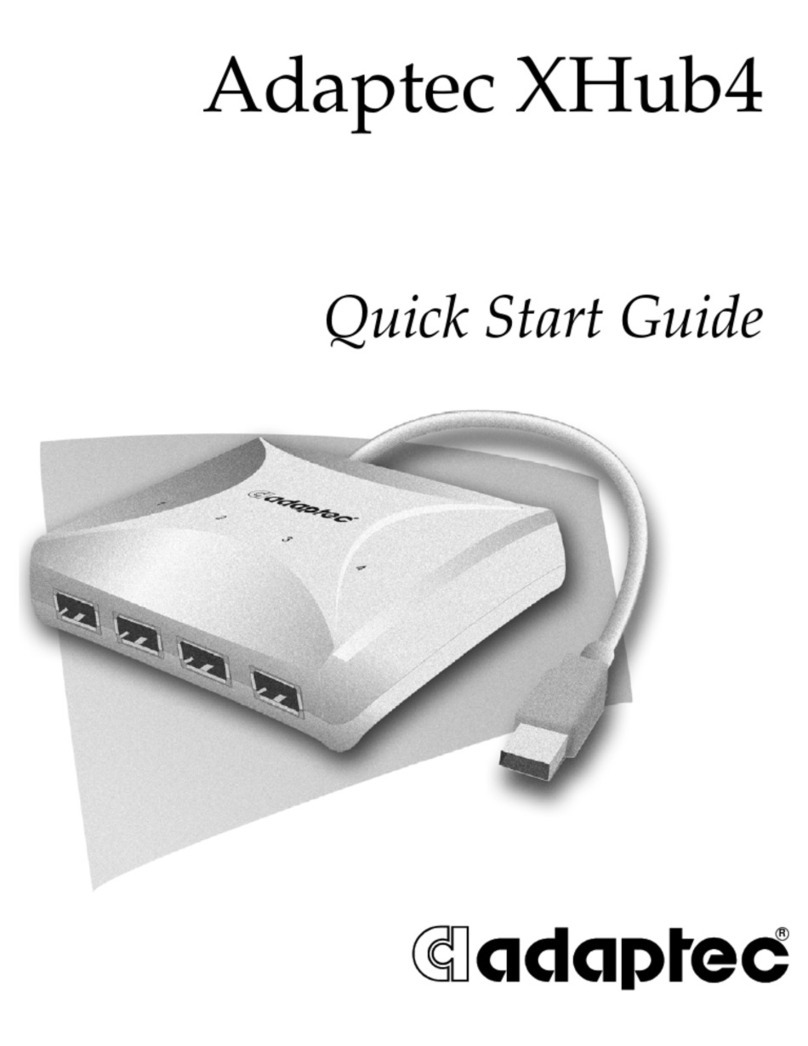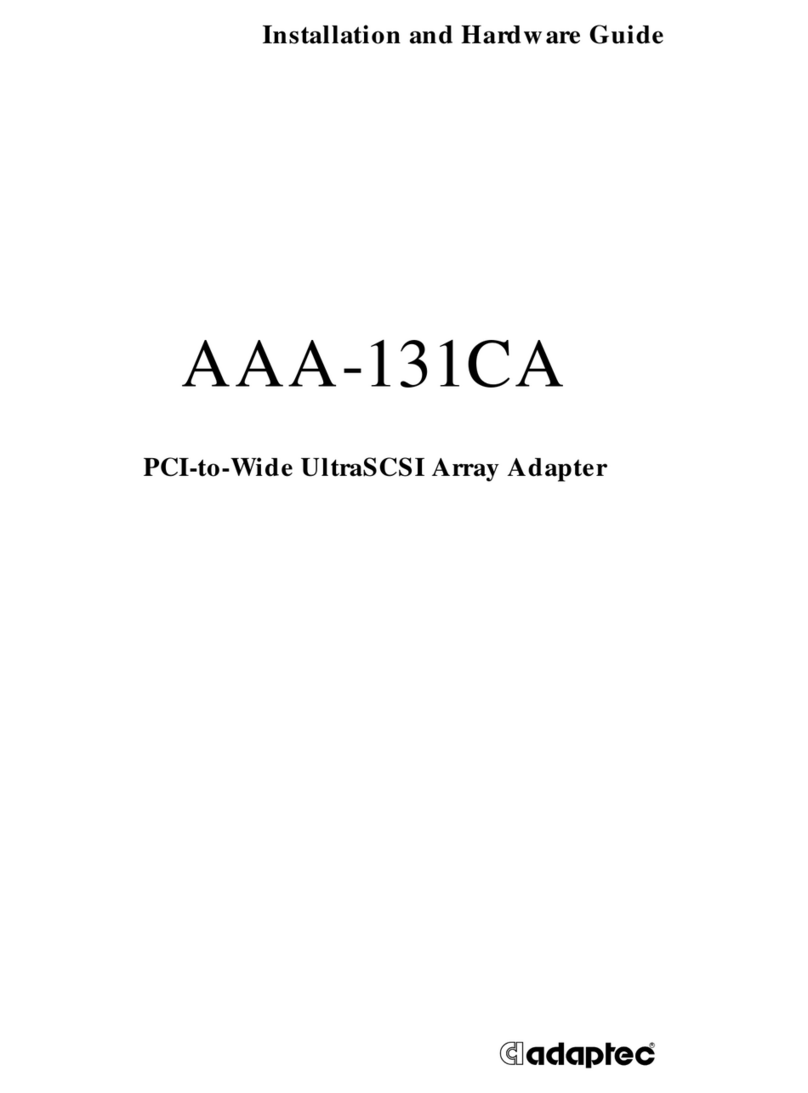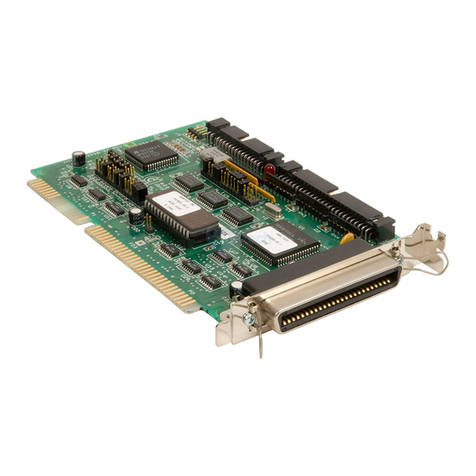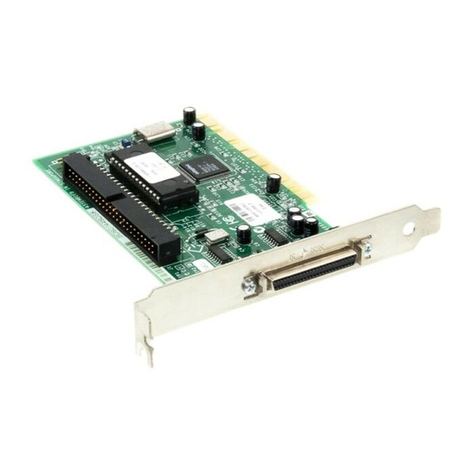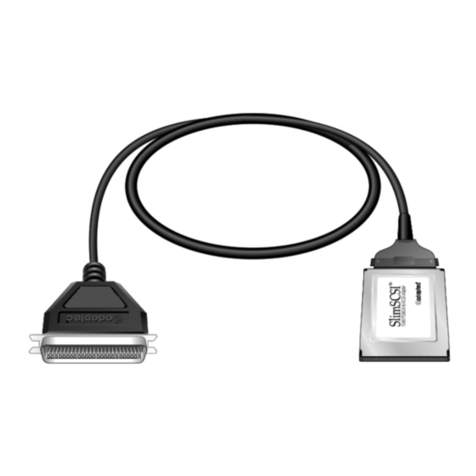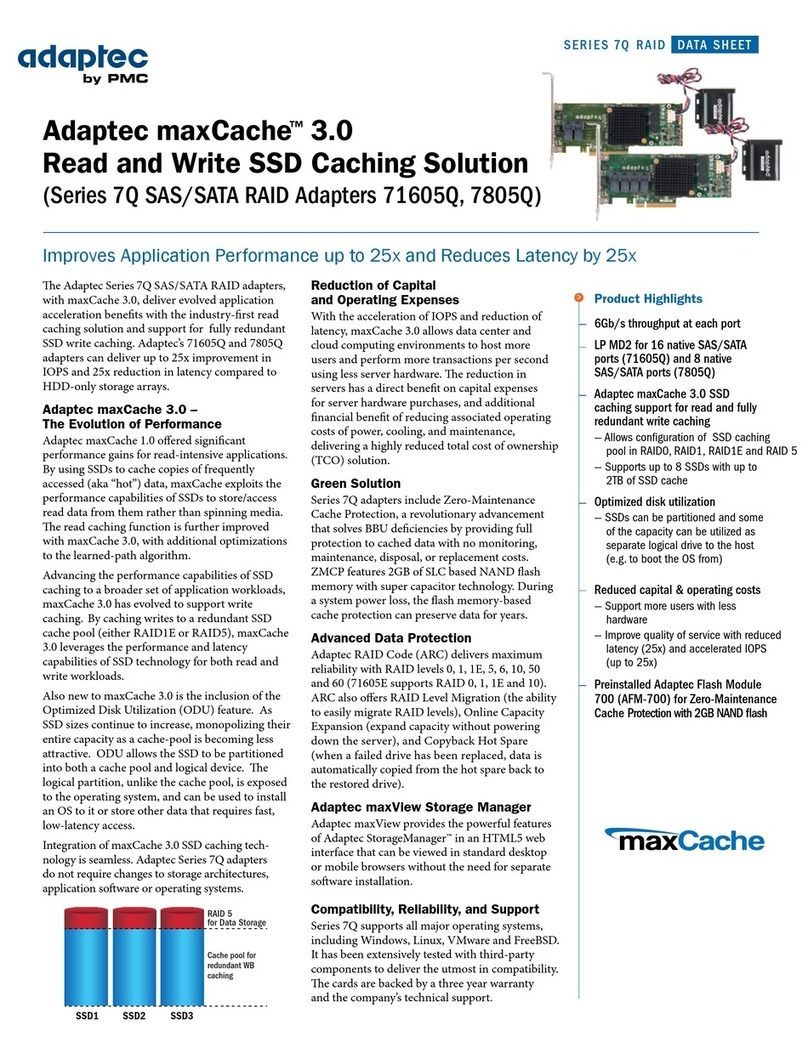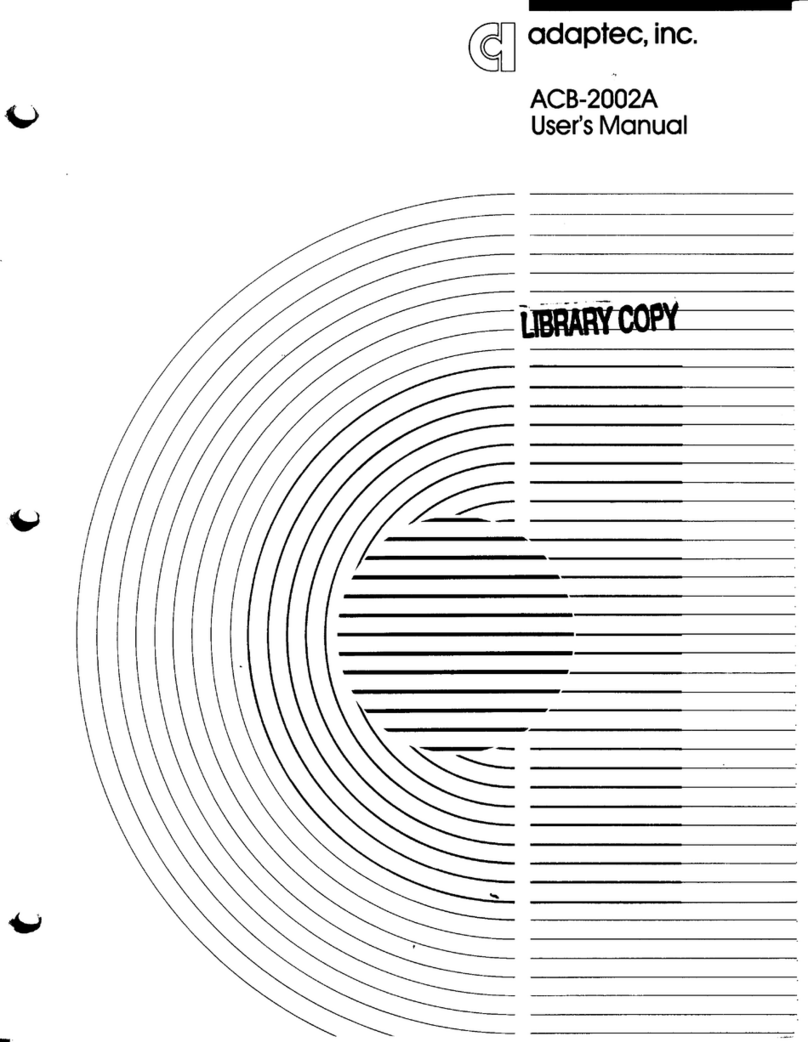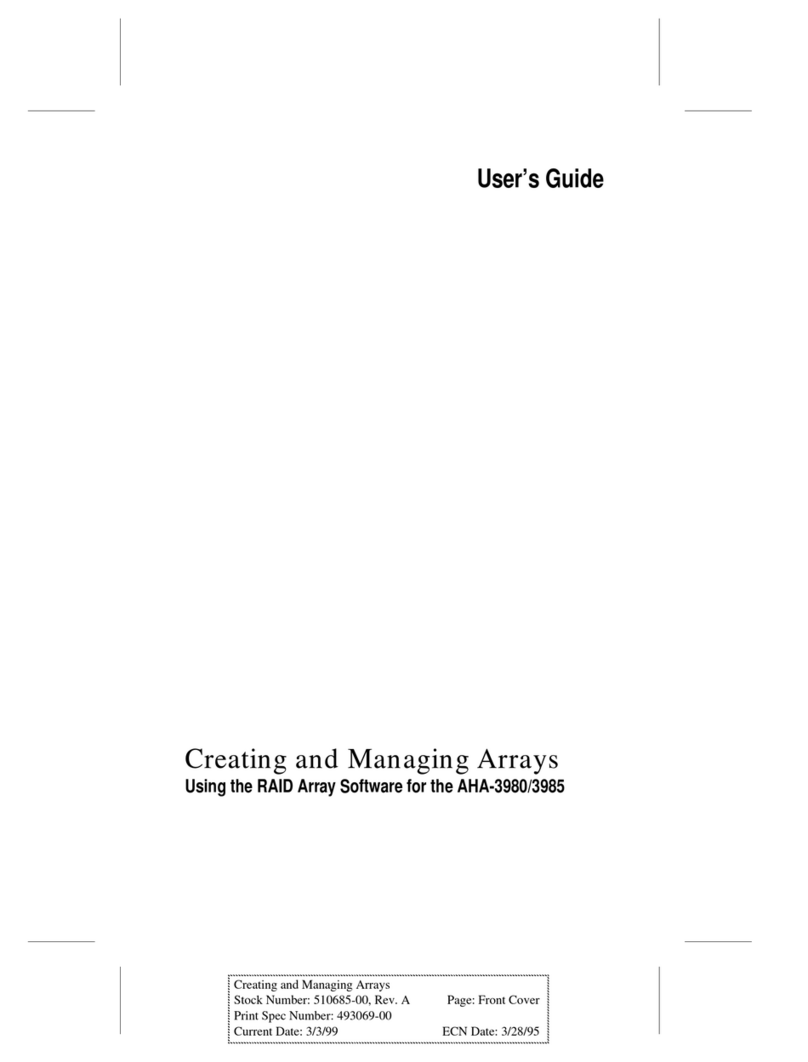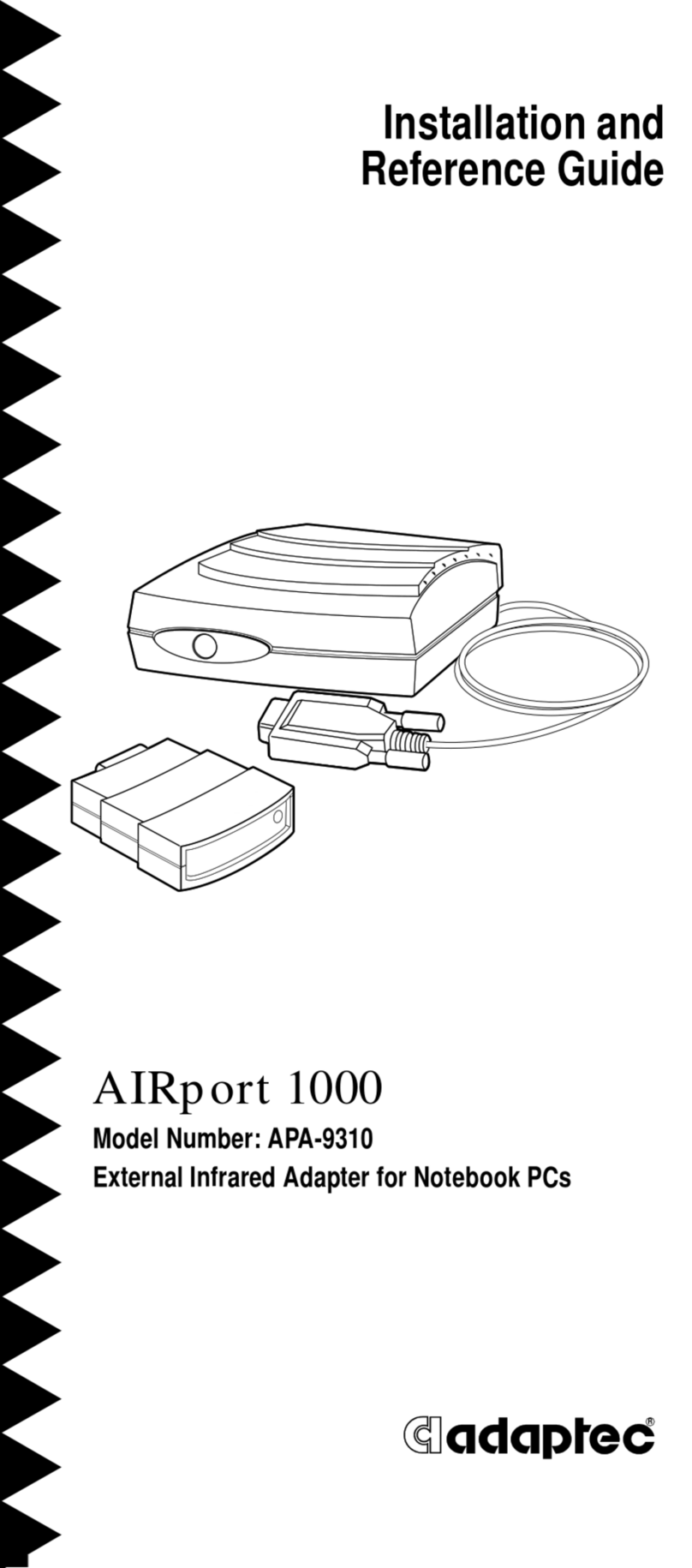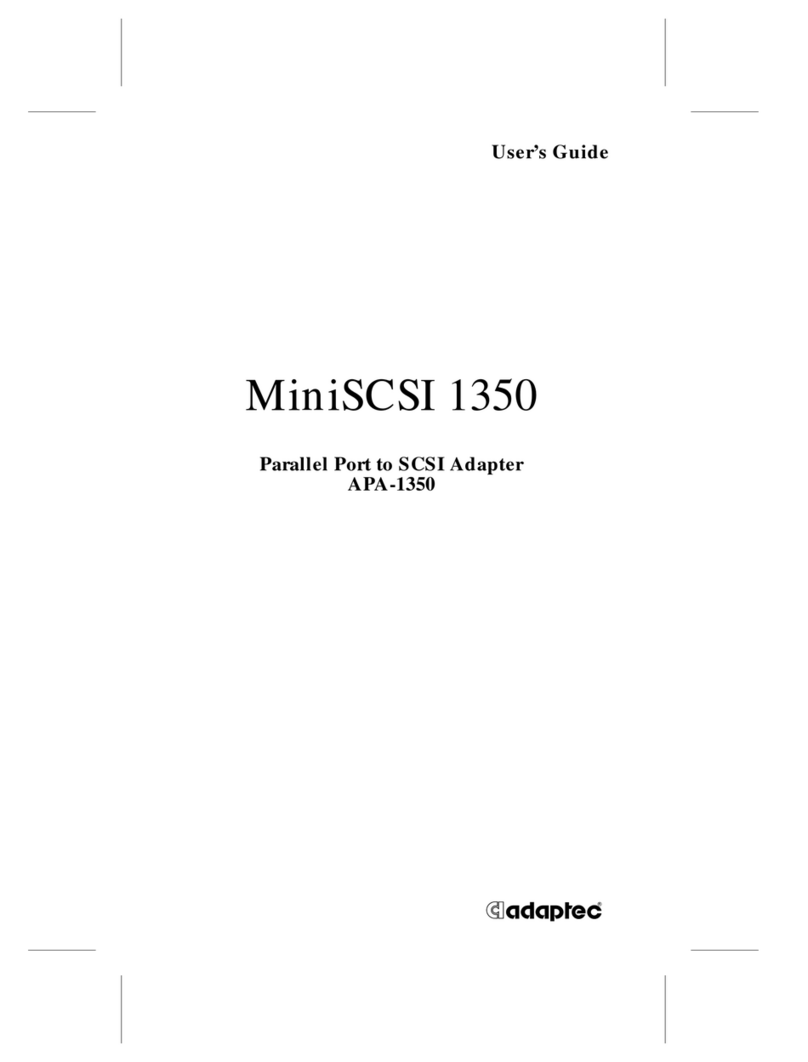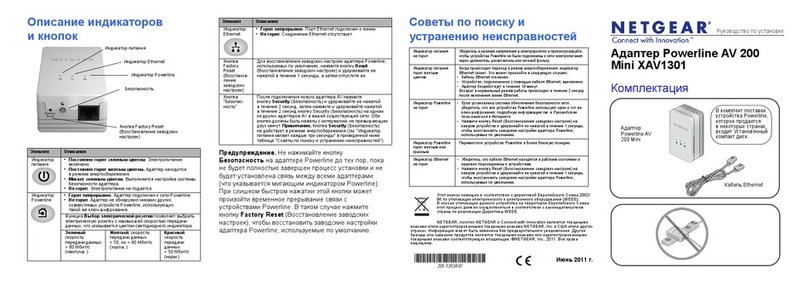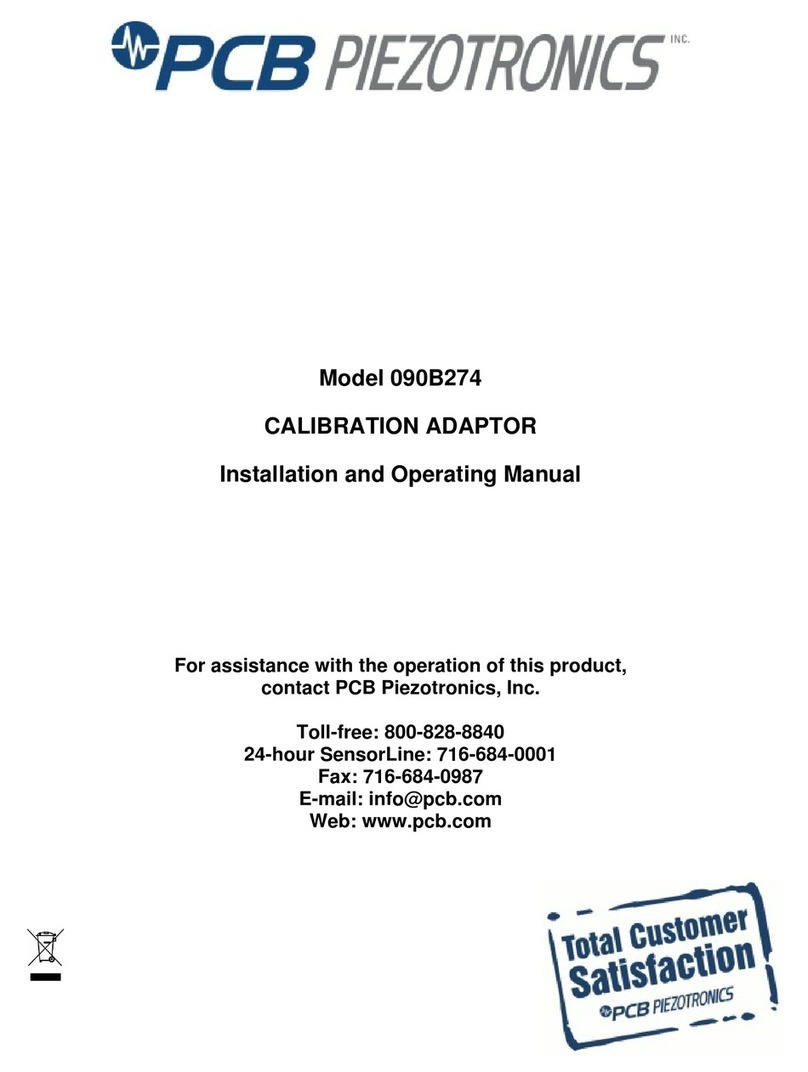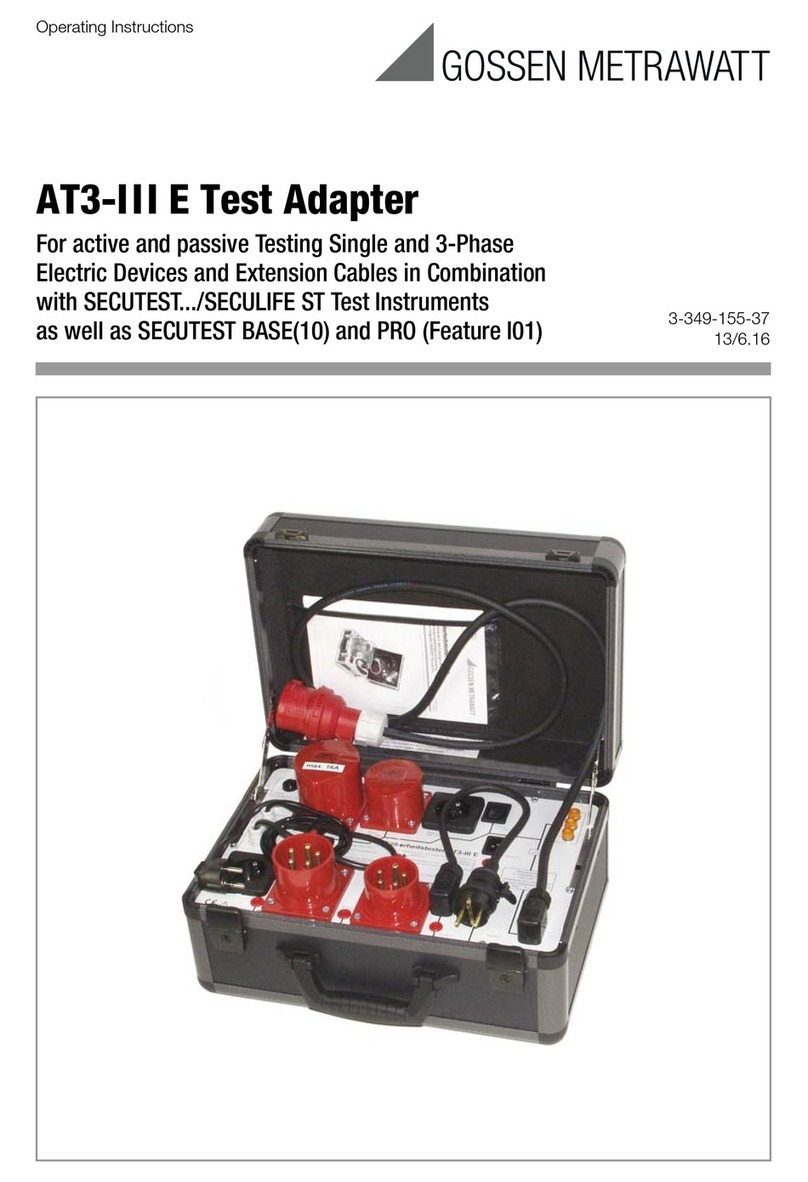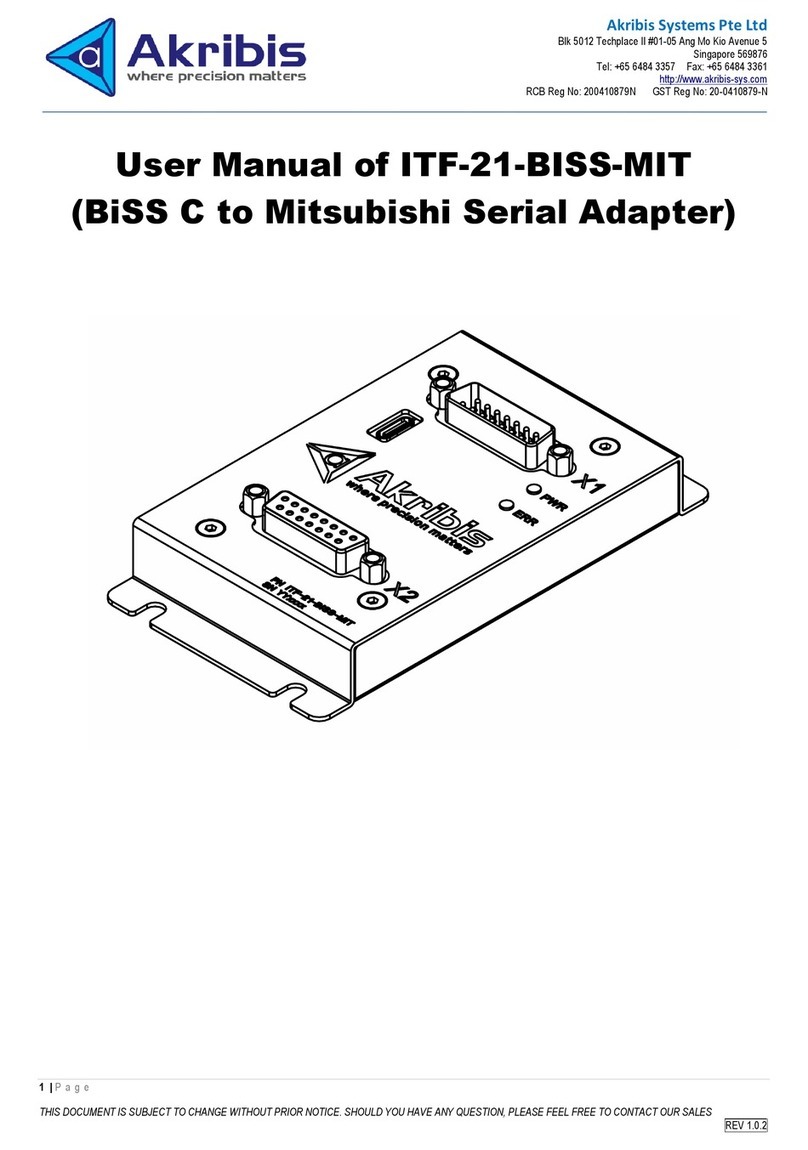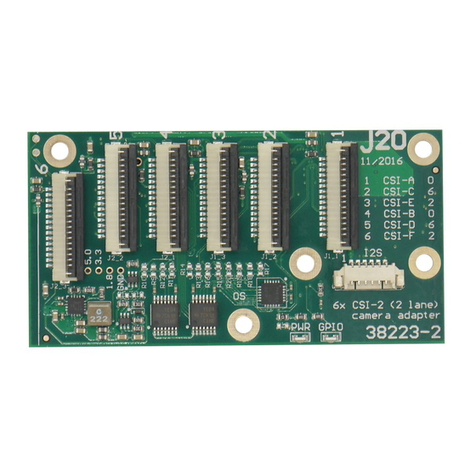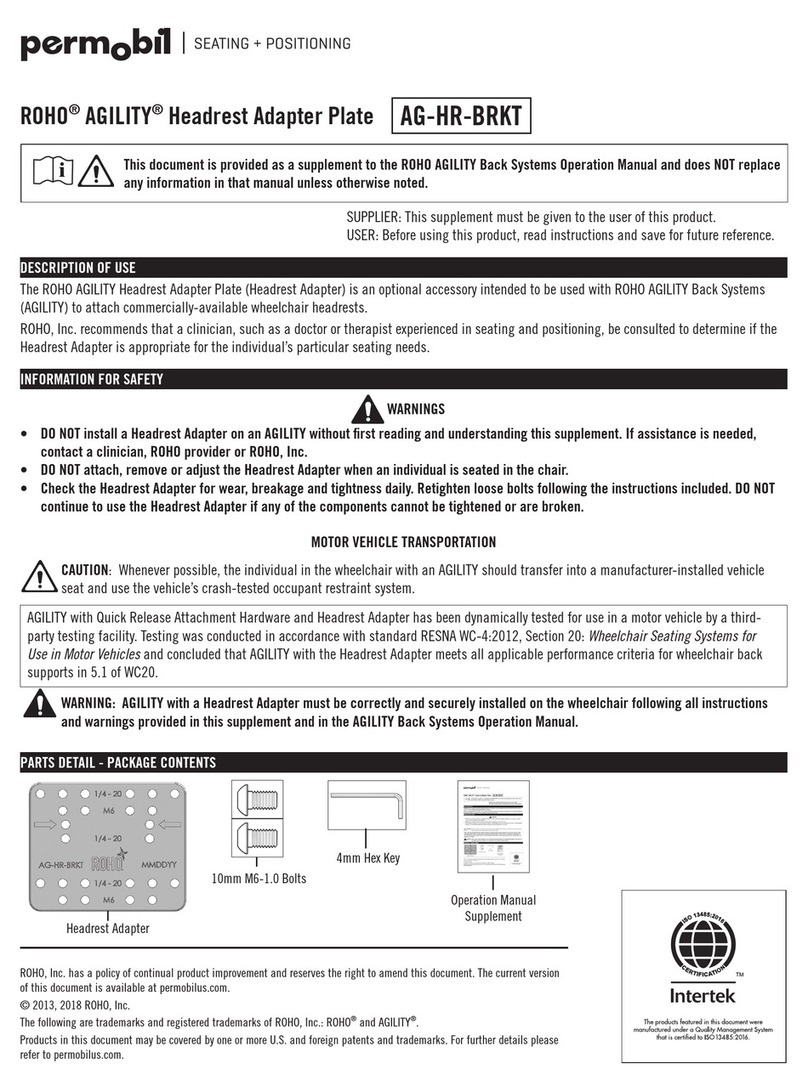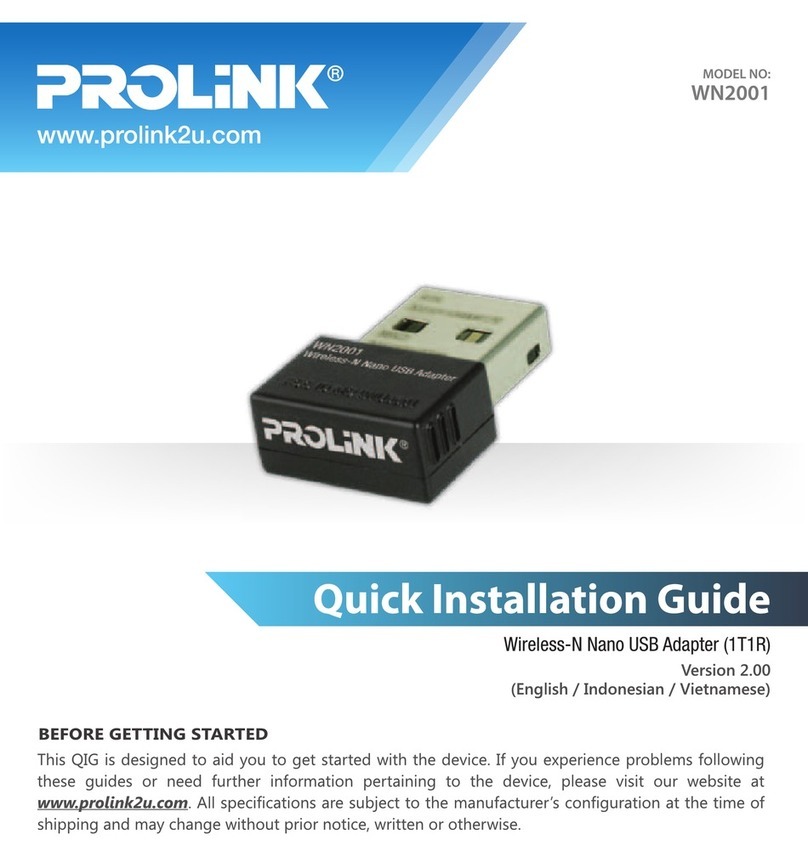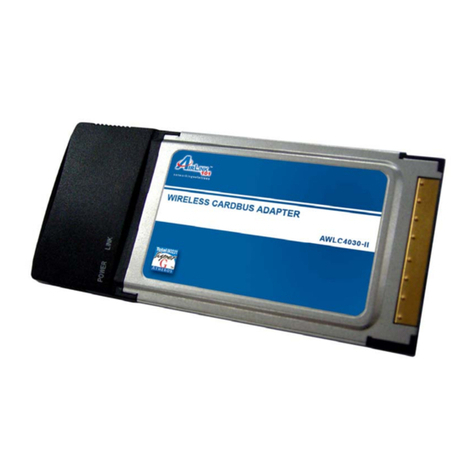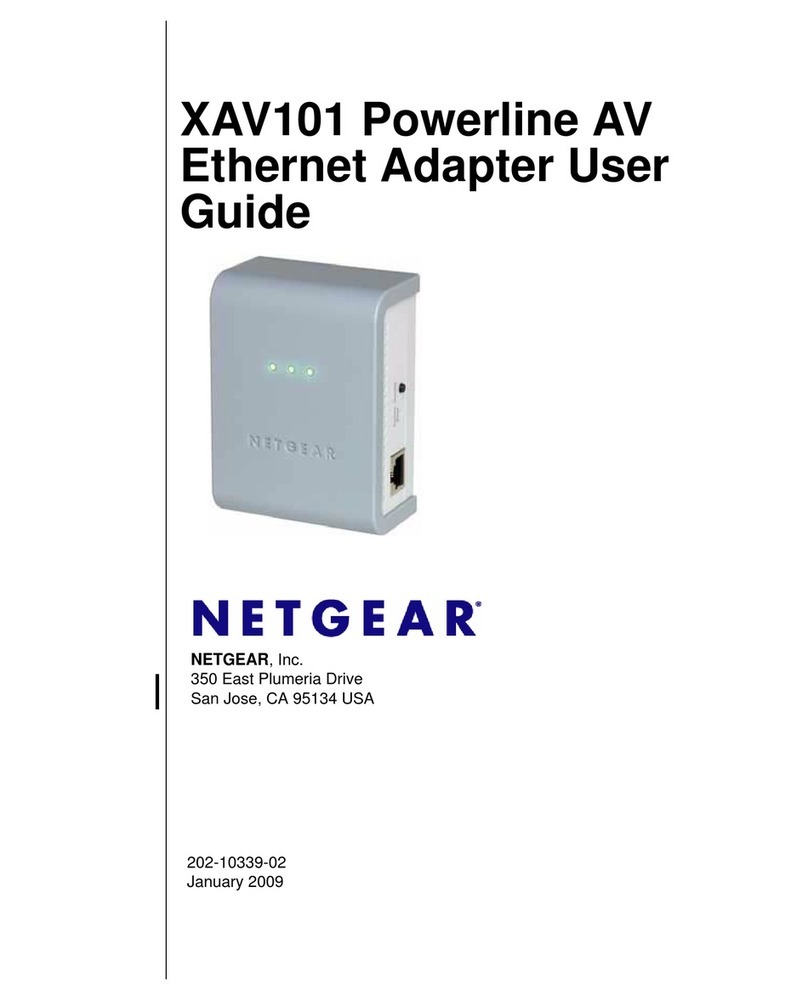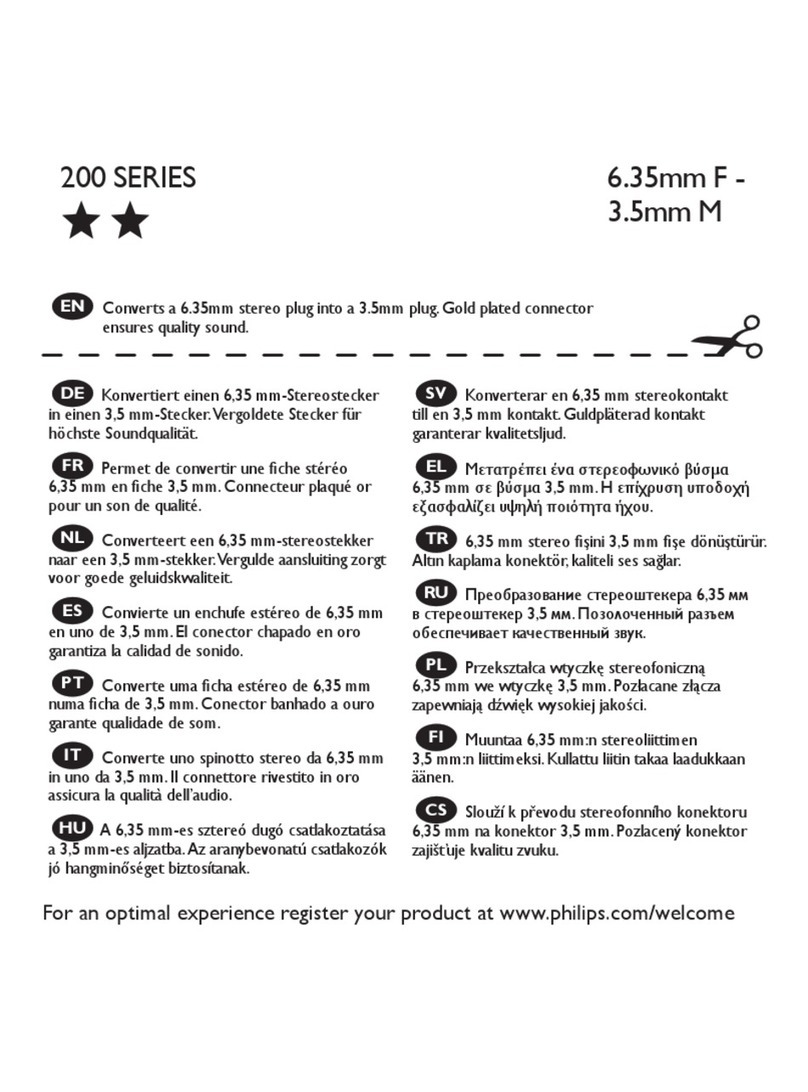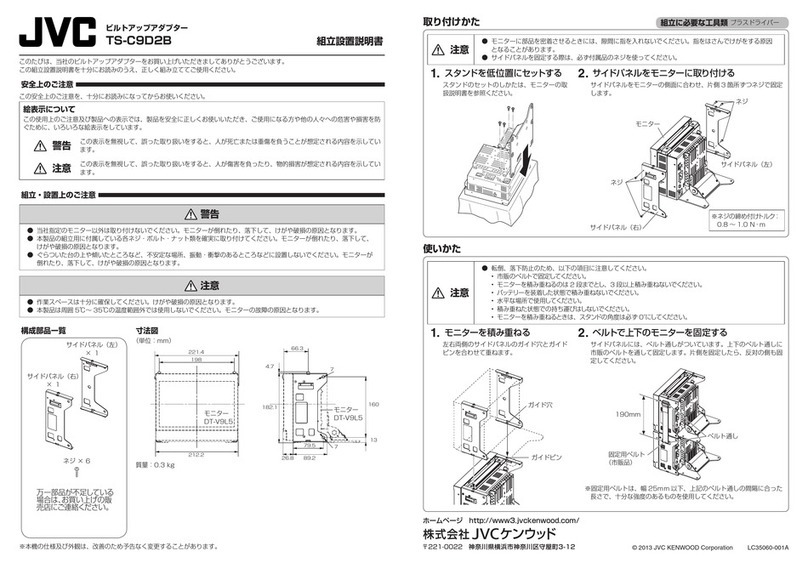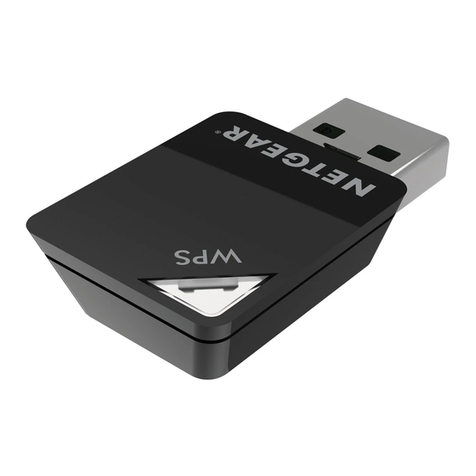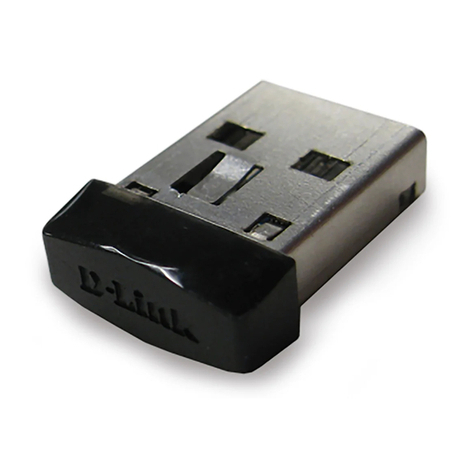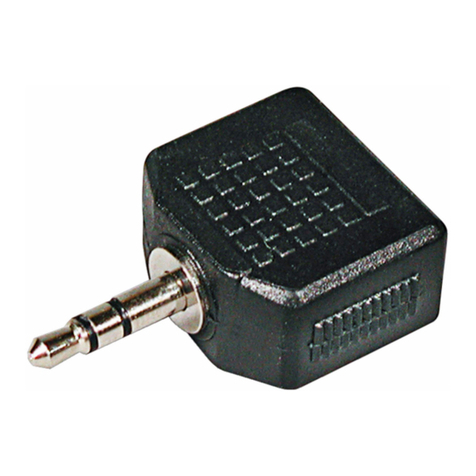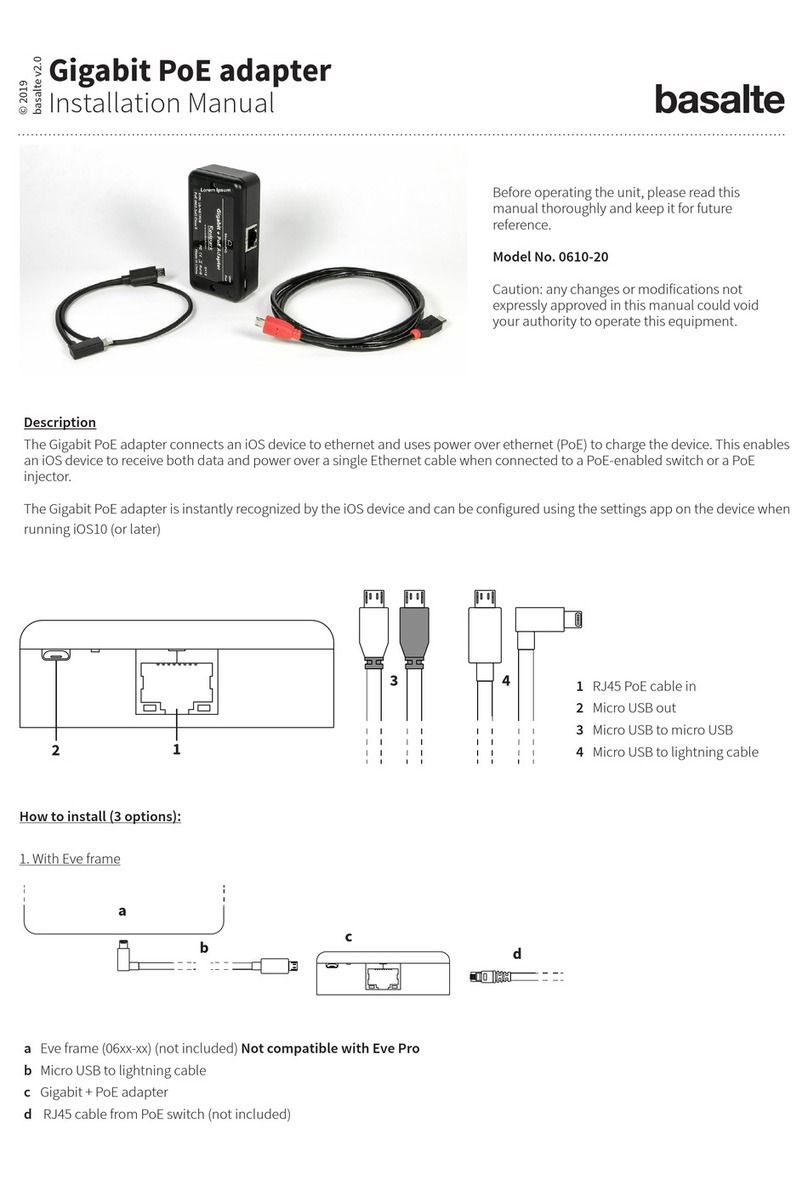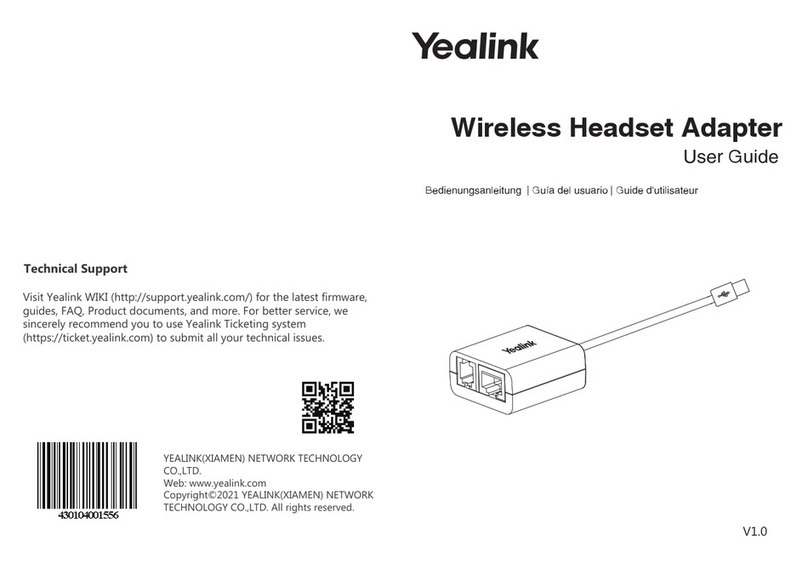
SAS END-USER GUIDE
Moving to Serial Technologies
Parallel SCSI technology has been the widely deployed standard in server and storage
data centers for the last 20 years. While parallel SCSI has been a reliable standard
interface, the technology has reached its highest performance level with the advent of
Ultra320. As servers are pushed to meet advancing system and application computing
requirements, parallel SCSI has struggled with signal skew and crosstalk, signal
termination restrictions, cable and connector reflections, and device addressability —
all of which have become barriers to next-generation throughput performance.
Industry leaders in server and storage computing have been working together to
overcome this throughput performance challenge. The result of this intensive
investigationhas resulted in transitioning parallel SCSI to a serial interface. Serial
technology transmits data in a single stream instead of the multiple streams found in
parallel technology, therefore it is not tied to a particular clock speed and can transfer
data at a much higher rate (up to 30 times faster) than parallel technology. It also offers
greater reliability and scalability.
Serial technology is not new. In fact, the SCSI evolution was based on the widely
pervasive serial network already deployed in the datacenter. In the late 1990s, storage
utilization and growth were critical issues facing the datacenter. The result was proposals
and products that aggregated storage on a dedicated ‘storage network’. This helped IT
managers to consolidate and effectively manage and grow their aggregated enterprise data
pools. Yet, successful implementation required long distance support and high speed with
minimal latency to provide rapid access to critical information that was now consolidated
away from the data center. The answer was Fibre Channel, the first serial technology to
gain significant momentum in the mainstream enterprise marketplace.
By 2002, storage networks had become pervasive in the enterprise. Yet the amount of
information continued to grow, in response to the efficiency of these networks and the
user perspective that all data is critical data. This organic data growth coincided with
strict new government data retention requirements (e.g. Sarbanes-Oxley) that meant that
anew “class” of storage — non-mission-critical data — had to be kept readily accessible
for a number of years. So, the industry wrestled with the next major technology
requirement, a way to cost-effectively manage the exploding amount of storage content in
the IT infrastructure.
Cost became the principle focus. Solution vendors and industry leaders responded with
the introduction of Serial ATA (SATA), which serialized the low-cost, high-volume
desktop-class ATA hard drives with a new interface that provided adequate reliability and
performance for non-mission-critical information. Companies with data protection
expertise, such as Adaptec, responded by helping to drive best-in-class RAID technology,
that when paired with SATA hard drives, provided optimized technology at a much lower
cost. SATAalso provided higher disk interconnect speeds of 1.5Gb/s (SATA I) and 3Gb/s
(SATA II). The future is exciting for SATA, as speeds continue to increase (up to 6Gb/s in
the future) and some enterprise capabilities will be enhanced, including hot swap and
simplifiedcabling. Meanwhile, the technology will maintain the ATA family commitment
of driving the lowest acquisition cost per megabyte for enterprise IT centers.
Putting Serial Attached SCSI to Work for You
INTRODUCTION
Over the past three years, Serial
Attached SCSI (SAS) has been
unveiled as the next evolution of
the SCSI standard — featuring
increased performance,
scalability, and reliability, while
maintaining ease-of-use and the
SCSI feature set that has made
SCSI the de factostandard in
enterprise computing
environments. The first SAS
products are starting to become
available, and represent the first
step in making SAS a widely
adopted technology standard.
This guide from Adaptec will
help you understand Serial
AttachedSCSI: what it is, how it
works, how it can help you get
higher storage performance at a
lower price point, and how to put
this transition to the best use for
your existing storage and future
storage needs.
For many years Adaptec has been
the leader in SCSI products and
technology, and is bringing this
expertise to the SAS market.
During the transition to SAS,
count on us to provide you with
the information you need to use
this technology and get the most
from your storage investment.
